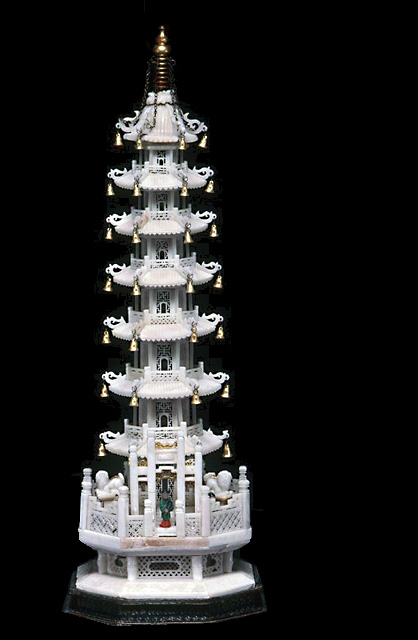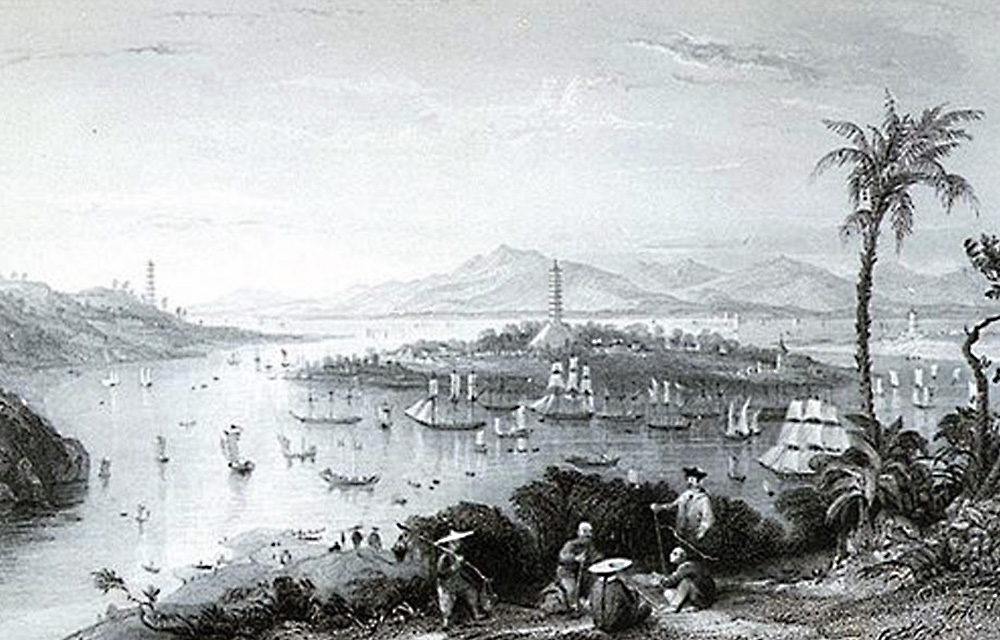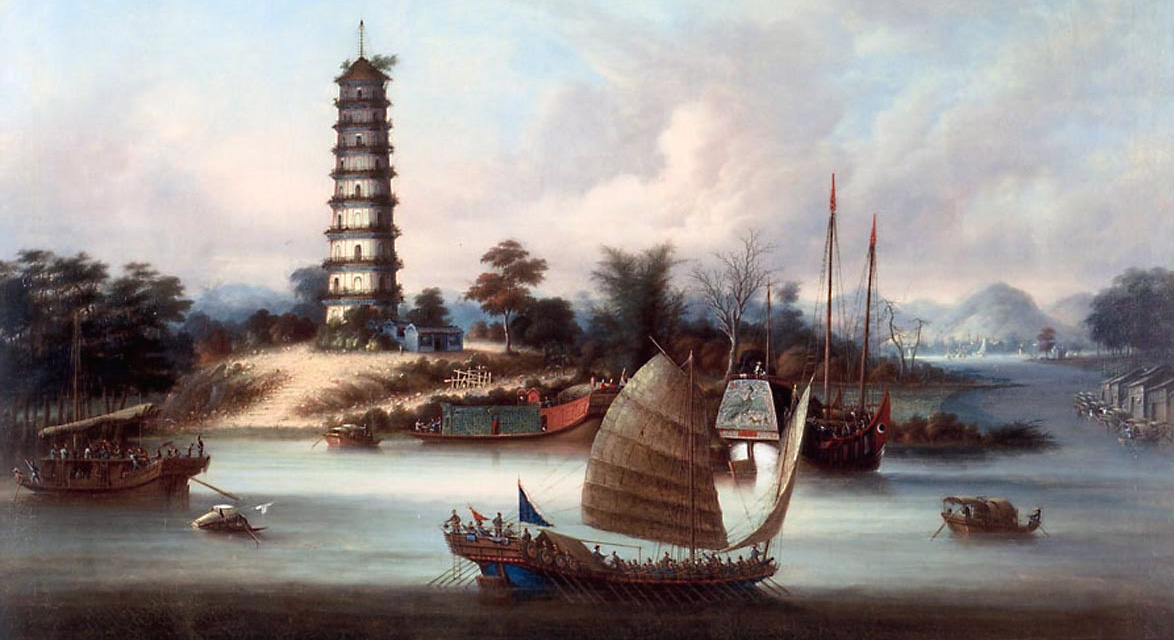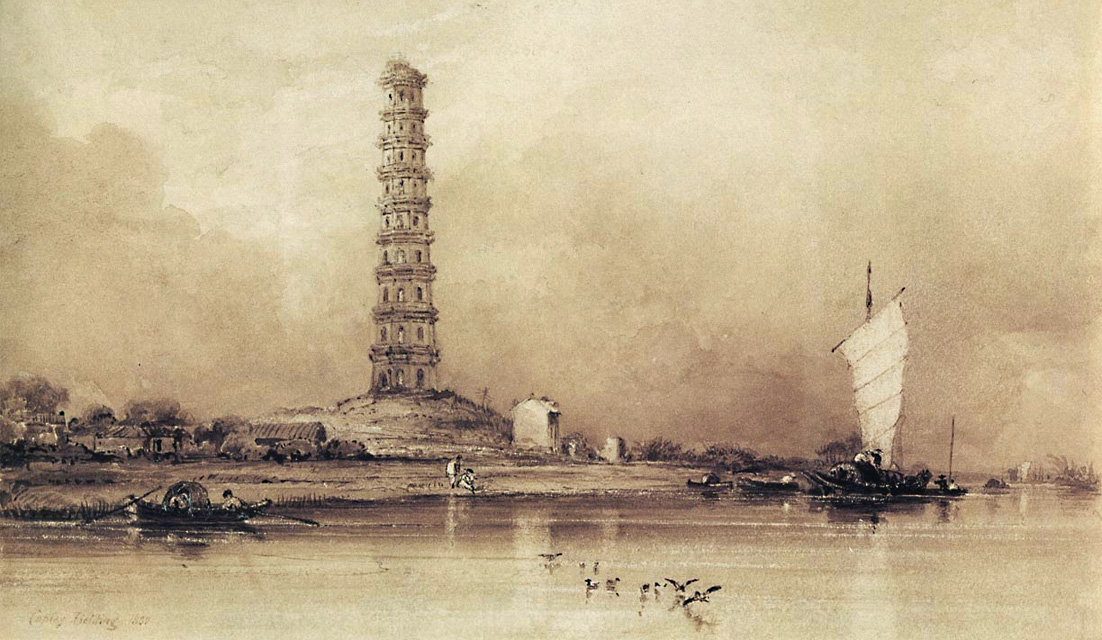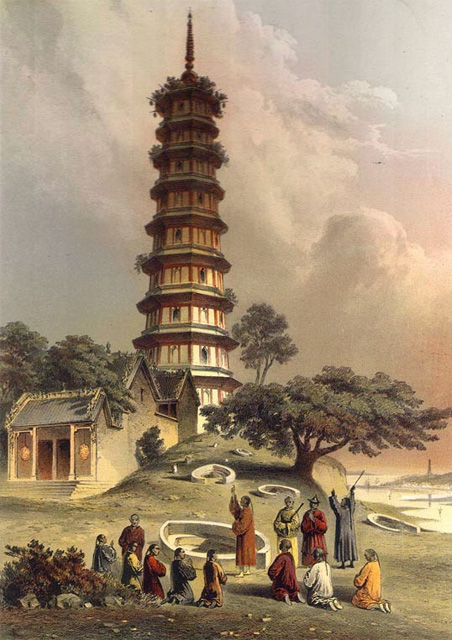“Model of Pagoda,” ca. 1801
Peabody Essex Museum [cwO_1801c_E9659_Pagoda.jpg]
“Whampoa, from Dane's Island,” by Thomas Allom
National Maritime Museum [cwBTW_1800s_Wh_PAD0049.jpg]
“The Nine-Stage Pagoda at Whampoa Anchorage,” ca. 1830–50
Richard Redding Antiques Ltd [cwBTW_1830-50_Whampoa.jpg]
“Whampoa Pagoda on the Pearl River,” from a sketch by Cpt. Robert Elliot, 1830
[ cwBTW_1830_AH8718_Pag_sc.jpg]
“Pagoda at Whampoa,” by William Heine, 1853
[cwBTW_1853_Heine_Pagoda_bx.jpg]
Pagodas
In the early 1850s, panoramic views of Canton depicted a port city vastly different from the scene before the first Opium War. The Anglican Church built in 1847 dominated the architectural profile while pagodas, hitherto so prominent in artistic renderings, faded from the scene.
